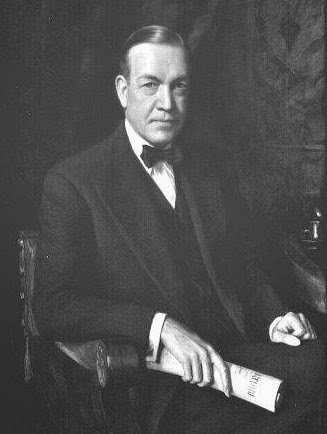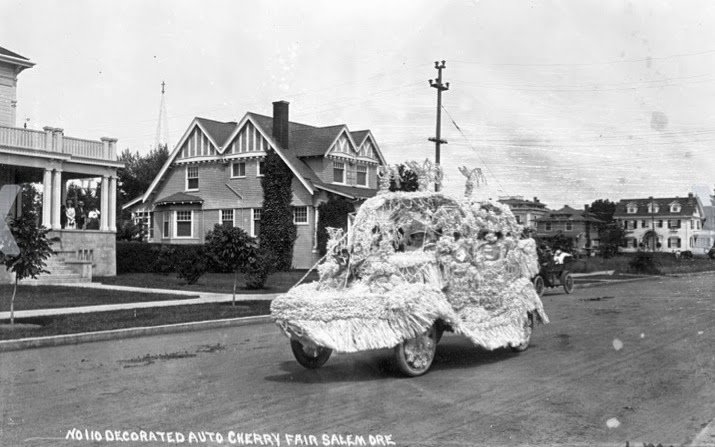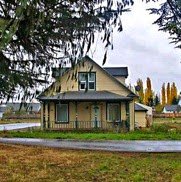World Events
- Woodrow Wilson is inaugurated for the second time. Public opinion turns toward entry in the war on the side of Britain and its countrymen that many Americans feel most relation in family and culture.
- On April 6th, the US Congress declares war with Germany and General Pershing arrives in France with “Doughboy” infantry soldiers of the American Expeditionary Force.
- Tsar Nicholas II abdicates his throne, Grand Duke Michael refuses it and power passes to the Provisional Government.
- Mata Hari is executed by the Allies as a spy.
- Danish West Indies is sold to U.S., later renamed as U.S.Virgin Islands.
- Jeannette Rankin of Montana becomes the first women to serve in the US House of Representatives.
- Dixieland Jass Band records “Livery Stable Blues”, the first jazz recording. “Tiger Rag” follows in a few months.
- The first Pulitzer Prize recognition goes to Laura E. Richards and Maud Howe Elliot for biography: Julia Ward Howe 1819-1910 Complete
- On April 6th, the US Congress declares war with Germany and General Pershing arrives in France with “Doughboy” infantry soldiers of the American Expeditionary Force.
- The Russian Revolution begins with the overthrow of the Tsar.
- Mata Hari is executed by the Allies as a spy.
- Jeannette Rankin of Montana becomes the first women to serve in the US House of Representatives.

In Salem
Charles Linza McNary graduated from Stanford University and Willamette University College of Law. His 1914 bid for the State Supreme Court fell one vote short, but it made him available to be appointed to the U.S. Senate in 1917 when Senator Lane died. A progressive Republican, he supported many New Deal measures such as Social Security and TVA. As Minority Leader for the Republicans in the Senate during the New Deal years, he was frequently consulted by President Roosevelt and was credited with preserving the influence of his party He played a major role in obtaining government funding for Bonneville Dam and won a fight for federal forest program, In 1902, McNary married Jessie Breyman who died in an automobile accident near Salem in 1918. In 1923 he married Cornelia Morton. In 1940, he briefly campaigned for president and only reluctantly accepted the vice presidential nomination with Republican presidential candidate Wendell Willkie in 1940, losing to Franklin D. Roosevelt and Henry Wallace. He died of pneumonia in 1944.When you visit
 |
| McNary home (center) seen during Cherry Festival, year unknown. |
Senator McNary was born on a farm near Salem. There are no McNary residences remaining in Salem: his home on Court Street (above), between the Eugene Breyman residence and the YMCA, was demolished. An undated Cherry Festival newspaper photograph (see link) was taken on Court Street near the McNary home and records its appearance. It is symbolic of McNary’s relationship with the Breyman family. Charles McNary is remembered in Salem today for two sites. In 1944 the City Council voted to give the Municipal Airport the name McNary Field because he had helped secure federal assistance and cooperation in developing the airport and securing its designation as an army air base during World War II. A high school in the NOLA Neighborhood is also named for Senator McNary
Other Events
- Walter Keyes is elected mayor and will serve two years.
- In the Senate Office Building on a day in July, blindfolded men drew capsules baring draft numbers for enlistment into the Army. In this district, the name of George DeSort (De Sart?) of Silverton was first drawn. By October, Salem was prepared to turn out to welcome Co. M (the local National Guard unit) home from Camp Clackamas. This would be their final home visit before being ordered south, and later to France. (These military items from Ben Maxwell’s Salem, Oregon, edited by Scott McArthur, 2006.)
- Beginning this year and until 1927, Salem King’s Products has successful packinghouse on Front Street in the present Truitt Brothers facility.
- The Farrar Building is constructed on 325 State Street. The Midget Market was one of many shops occupying space here. From 1930 through 1981, the store to the east was the Smoke Shop, not only selling cigars, but serving food and drinks at a counter. Billiard and cards were played in the back. It became a community institution, serving farm and transient laborers in the Salem area, offering help in temporary shelter and credit. There is also a 1992 photograph. The Farrar Building is a National Register property in the Historic Downtown District and is featured on the SHINE downtown walking tour slide show.
 |
| Old Swengle Street farmhouse |
- East of Salem, a farmhouse is built on the Pollard Donation Land Grant. This modest Swengle Street residence is possibly the oldest house in the present ELNA neighborhood. No information is available about its first owner.
- In contrast, William McGilchrist. Jr. builds a spacious Colonial Revival home at 695 Summer Street, representing a style of residential architecture popular at that time. In its original location, this was the home of Governor Robert D. Holmes, 1957-59. It was moved north on the same street due to the construction of state buildings in the 1990s. As seen in a recent photograph taken for “Salem’s Moving History”, the present exterior remains faithful to the original appearance except the shutters at each window have been removed.
 |
| McGilchrist House in its new location |
- The interior of this Local Landmark is especially interesting because the rooms have retained their proportions although the functions have changed. The ground floor had a generous parlor and living area on the south side with dining, kitchen and servants quarters on the north. Upstairs were the typical four bedrooms and one bath. The fireplaces, built-in cabinets and ceiling light fixtures appear original. The basement, with laundry, storage and wood room, is missing in this new location.
Currently, it houses a state office in the North Capitol Mall Heritage Park. A photograph is featured on “Salem’s Moving History.”
